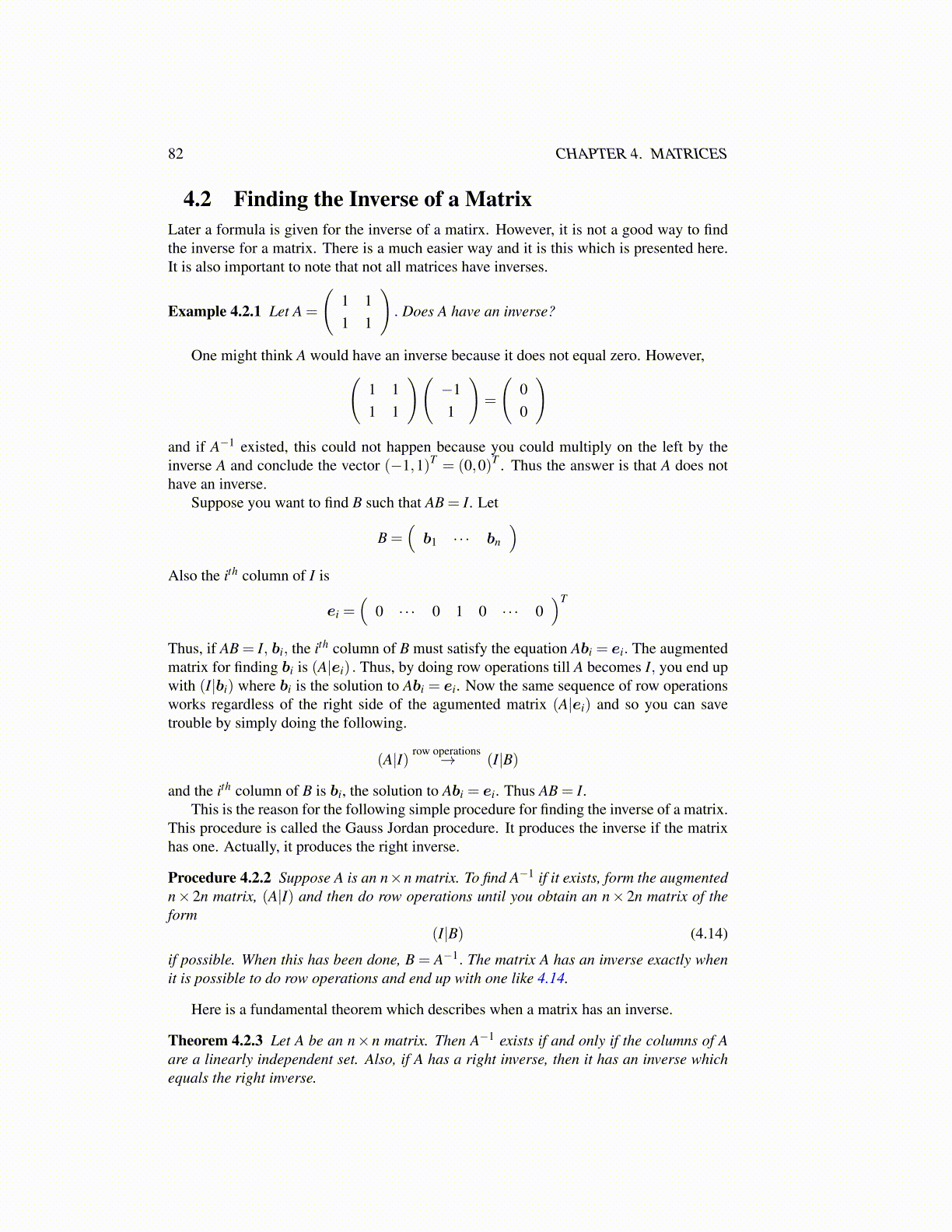
82 CHAPTER 4. MATRICES
4.2 Finding the Inverse of a MatrixLater a formula is given for the inverse of a matirx. However, it is not a good way to findthe inverse for a matrix. There is a much easier way and it is this which is presented here.It is also important to note that not all matrices have inverses.
Example 4.2.1 Let A =
(1 11 1
). Does A have an inverse?
One might think A would have an inverse because it does not equal zero. However,(1 11 1
)(−11
)=
(00
)
and if A−1 existed, this could not happen because you could multiply on the left by theinverse A and conclude the vector (−1,1)T = (0,0)T . Thus the answer is that A does nothave an inverse.
Suppose you want to find B such that AB = I. Let
B =(
b1 · · · bn
)Also the ith column of I is
ei =(
0 · · · 0 1 0 · · · 0)T
Thus, if AB = I, bi, the ith column of B must satisfy the equation Abi = ei. The augmentedmatrix for finding bi is (A|ei) . Thus, by doing row operations till A becomes I, you end upwith (I|bi) where bi is the solution to Abi = ei. Now the same sequence of row operationsworks regardless of the right side of the agumented matrix (A|ei) and so you can savetrouble by simply doing the following.
(A|I) row operations→ (I|B)
and the ith column of B is bi, the solution to Abi = ei. Thus AB = I.This is the reason for the following simple procedure for finding the inverse of a matrix.
This procedure is called the Gauss Jordan procedure. It produces the inverse if the matrixhas one. Actually, it produces the right inverse.
Procedure 4.2.2 Suppose A is an n×n matrix. To find A−1 if it exists, form the augmentedn× 2n matrix, (A|I) and then do row operations until you obtain an n× 2n matrix of theform
(I|B) (4.14)
if possible. When this has been done, B = A−1. The matrix A has an inverse exactly whenit is possible to do row operations and end up with one like 4.14.
Here is a fundamental theorem which describes when a matrix has an inverse.
Theorem 4.2.3 Let A be an n× n matrix. Then A−1 exists if and only if the columns of Aare a linearly independent set. Also, if A has a right inverse, then it has an inverse whichequals the right inverse.